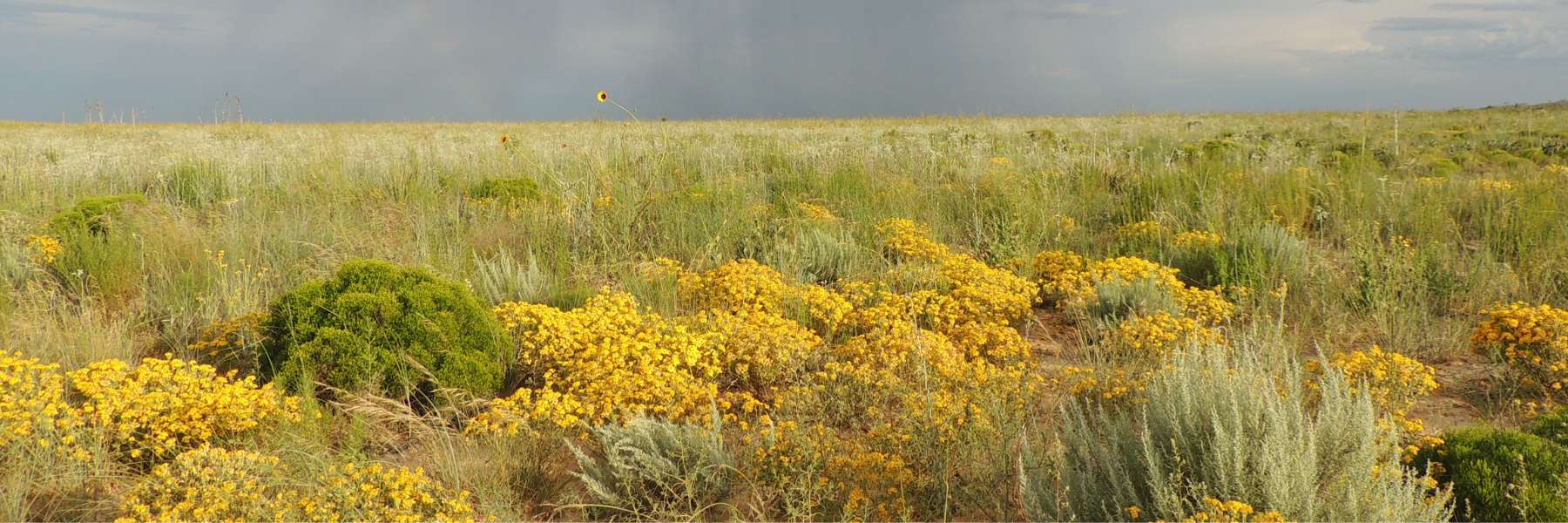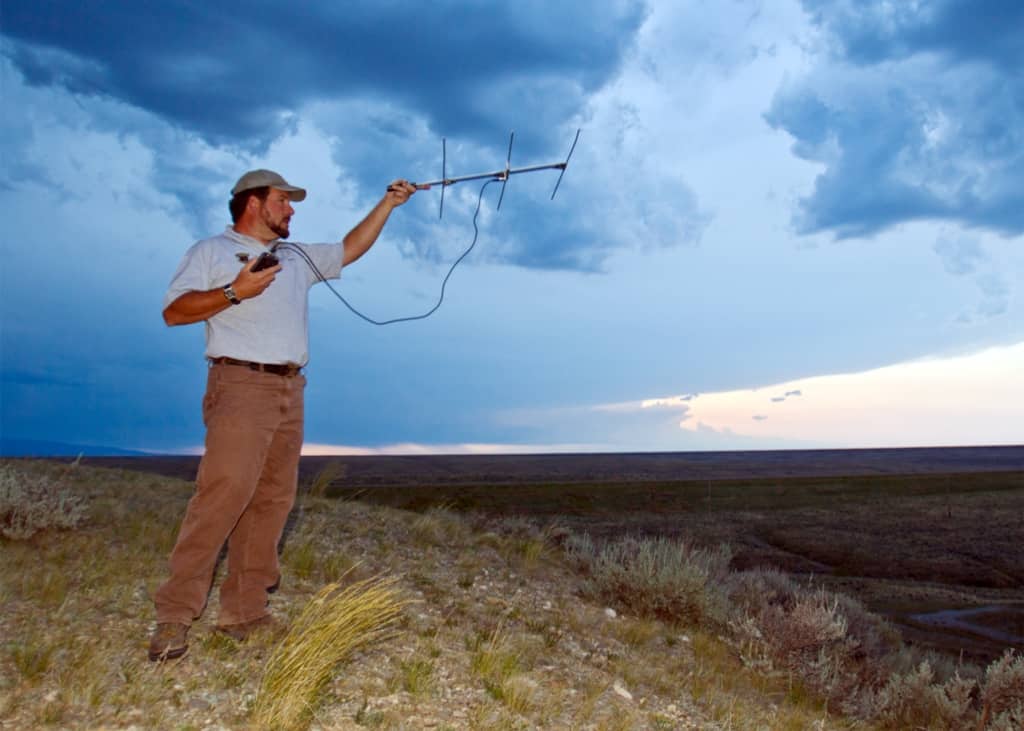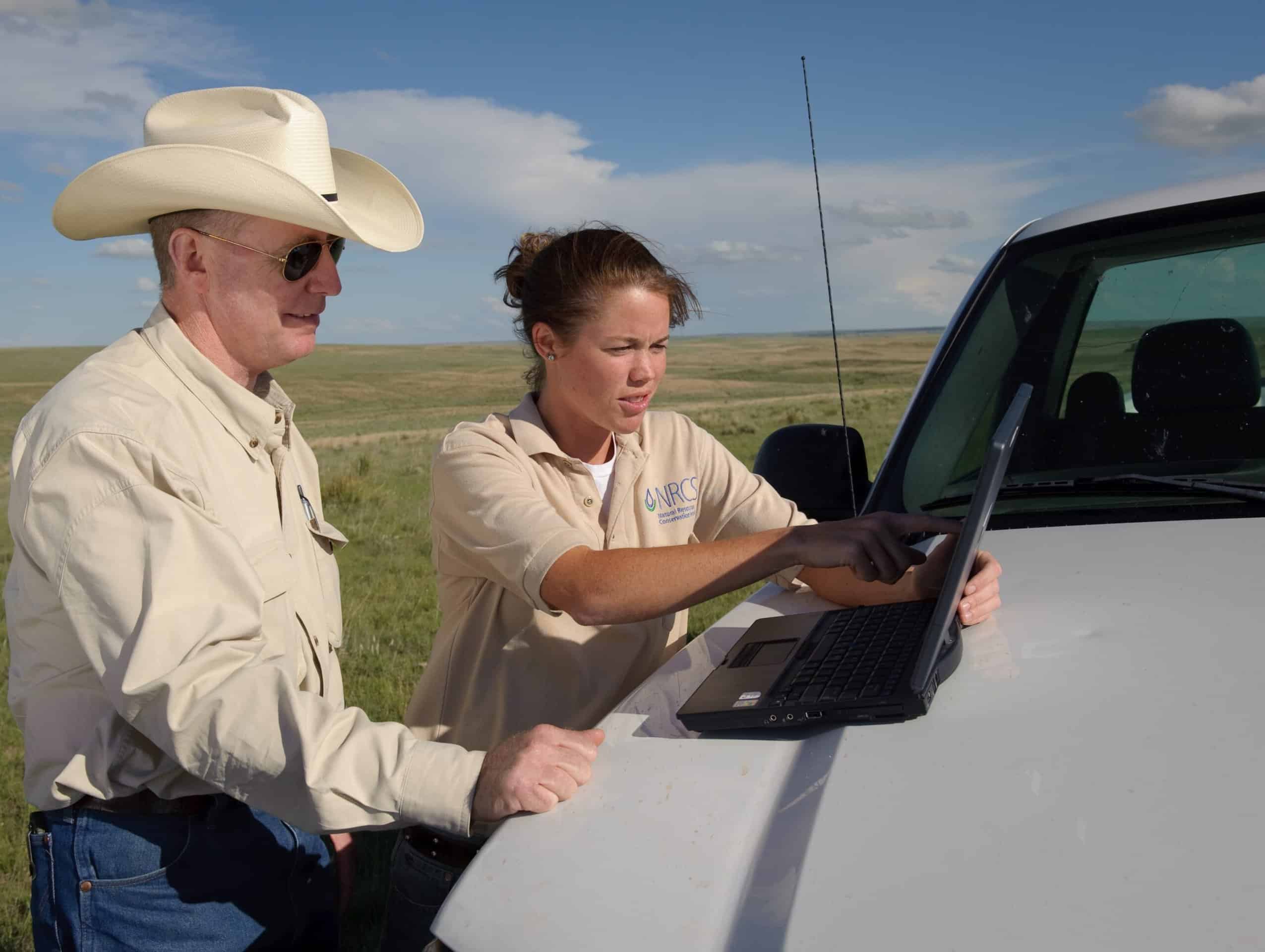
Photo: Andy Lawrence
The Lesser Prairie-Chicken Initiative
The Lesser Prairie-Chicken Initiative is helping birds survive and ranchers thrive in the Southern Great Plains.
We apply the power of the Farm Bill to enhance private lands where grasslands are intact and lesser prairie-chicken numbers are highest.
The Lesser Prairie-Chicken Initiative (LPCI) was launched in 2010 to promote healthy grazing lands and wildlife habitat in the Southern Great Plains.
Now part of Working Lands for Wildlife, LPCI works through voluntary cooperation, science-based strategies and community support.
Conserving and restoring productive prairie ensures a secure future for ranchers, birds and hundreds of other species who depend on thriving, productive grasslands.
WLFW is enhancing NRCS’ ongoing conservation efforts to support prairie-chicken recovery by strategically focusing the right practices in the right places to achieve beneficial outcomes.
Partnerships between NRCS, scientists and private landowners provide scientific insights and tools that guide broad initiative investments, help plan and implement individual projects, and assess resulting outcomes.
Participating ranchers
Acres conserved
States where LPCI works
“Now is the time to come together as a community and save our prairies.”
Scott Stout, Nebraska rancher & burn boss for the Loess Canyons Rangeland Alliance
Thanks to the success of proactive conservation, southern grasslands are recovering.
Proactive, landscape-scale conservation partnerships like LPCI have significantly reduced threats across lesser prairie-chickens' habitat.
The success of landowners' voluntary efforts to keep grasslands whole proves that diverse partners committed to a shared vision can achieve remarkable gains for wildlife.


Landowner Led

Science Informed

Agency Supported

Partner Driven
Ranchers are stewarding our Great Plains heritage of vast skies, beautiful prairies, and room to roam.
At its core, LPCI is about having conversations at kitchen tables to talk through what works best for the people who live on and use the land. We understand the importance of flexibility, and the commitment it takes to build trust and credibility.
Grazing lands support a wealth of wildlife, while also producing our nation's food and fiber. Wildlife-friendly ranching practices that keep grasslands healthy and productive include:
- Rest-rotation grazing to foster healthy, diverse native plants
- Strategically using prescribed fire to boost soil health and grass production
- Removing woody species like juniper and pinyon-pine to improve forage and habitat
Cutting-edge science and technology allows LPCI to direct resources where conservation returns are highest.
By focusing our efforts on where lesser prairie-chicken populations are concentrated -- and by shoring up core habitats -- we are able to spend our first dollar conserving 50 birds instead of just five.
Research shows that sustainable agriculture practices improve soil health, water quality, and plant diversity. Plus, they make rangelands more resilient to drought, fire, and other natural disturbances ... keeping ranches profitable and productive.
LPCI also relies on science to document the outcomes from Farm Bill investments. These new insights help to continually improve conservation practices to ensure we’re benefiting ranchers and wildlife.
LPCI funnels Farm Bill conservation funds to working grasslands in core habitat areas across 5 states.
LPCI offers technical and financial assistance for ranchers who live in the Southern Great Plains through a suite of tried-and-true NRCS programs. These include:
- Environmental Quality Incentives Program
- Conservation Stewardship Program
- Agricultural Conservation Easement Program
We also offer contractual assurances to give agricultural producers the predictability they need to operate their farms and ranches into the future. Landowners who continue to manage their ranches using NRCS-prescribed conservation practices are ensured regulatory compliance under the Endangered Species Act for up to 30 years.
While Farm Bill programs fuel LPCI, partners are the engine that powers our work.
Local conservation districts, state wildlife agencies, public land managers, non-profit organizations, universities, volunteer groups and more … it’s inspiring to see so many stepping up to safeguard prairies.
It takes people helping people to get the work done. That’s why LPCI and partners jointly fund field positions in rural communities. From Texas to Colorado, these range and wildlife conservationists are LPCI's “boots on the ground” who support ranchers each day in on-the-ground conservation practices.


